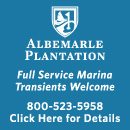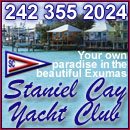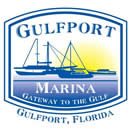Entry Fees Distract as Bahamas Eyes the Prize, a Carbon-Credit Boondogle – Peter Swanson
Cruisers Net publishes Loose Cannon articles with Captain Swanson’s permission in hopes that mariners with salt water in their veins will subscribe. $7 a month or $56 for the year, and you may cancel at any time.
When all else fails, try journalism. Entry Fees Distract as Bahamas Eyes the Prize, a Carbon-Credit BoondogleSeagrass Beds Said To Be Worth $50 Billion
Like crypto currency, the carbon-exchange market is something oft mentioned but little understood, including by me. This story assumes the concept is not just a figment of our collective imagination. Stand by for Bahamas Moorings II. The sequel appears likely. The key to understanding the “insane” and ultimately unsuccessful first attempt to establish rental moorings in the Exumas appears to have been something as mundane as seagrass. Not the actual turtle food: Seagrass, the idea. The Bahamas are sitting on a “blue carbon” treasure trove whose jewels are seagrasses, salt marshes and mangroves. According to DBG, a player in the carbon-offset industry, the Bahamas has $50 billion-worth ready to sell. So what did the Bahamas government do? On January 23, it leased the seagrass component of said trove to a private company in exchange for a promise of three pennies for every future dollar earned from mooring rentals—an unknowable revenue-stream. Bahamian leaders certainly must have known end of free anchoring would have been unpopular in its target market, foreign cruisers. Would we be willing to pay? That question is back again as cruising community reacts to the outrage of the day—a quintupling of entry fees. StenchThe odor of corruption around that $2.5 million deal was so strong, that the same government that had secretly approved the project soon ordered that it “cease and desist” and that all moorings be removed. That was on February 23, and…goshdarnit… The moorings are still in place. Free, at least temporarily. Creating a mooring monopoly “doesn’t even make sense,” Peter Maury told The Tribune newspaper of Nassau as it followed up after Loose Cannon broke the story back in February. Maury is president of the Association of Bahamas Marinas, whose members, like most Bahamians, were blindsided by the sudden appearance of barges installing helix anchors and floating balls. “Insane,” one of Maury’s colleagues quipped.
The lease assigning control of more than 4,000 acres of seabed to a single company granted Bahamas Moorings Ltd. the right to provide mooring services “in the Exuma and elsewhere in the country.” Would the Abacos and Eleuthera have been next? As it happens, the Bahamas are home to an astounding 40 percent of the world’s seagrass beds, which sequester huge amounts of carbon on the seafloor, according to scientists. The moorings appeared to have been cover to exercise control over a carbon offset to be sold to industries unable to reduce their carbon footprint on their own. Boaters BlamedIn response to Loose Cannon’s back-to-back articles on the moorings controversy (but before the project was canceled), the Bahamas government issued a news release, which said the quiet part out loud: “This initiative is also a key component of the Bahamas Blue Carbon Project, which aims to generate funding through carbon credit sales linked to the protection of seagrass beds and marine sediment—critical natural carbon sinks.” The same release blamed you, the cruising public, for damaging seagrass beds:
But experts contradicted the government, saying many, if not most of the planned mooring fields have sandy bottoms entirely without reefs or grasses. A prime example—where mooring installation was underway until the cease and desist order—is the anchorage at Big Major Cay, famous for good holding and swimming pigs. “The initial mooring balls in Normans Cay, Big Majors and Black Point are installed in some of the best holding clear sand in Exuma. There are bits of grass around, but nothing that even remotely resembles a nursery environment,” said Addison Chan, author of the Bahamas Land & Sea app and its corresponding Facebook group. “I haven’t studied every chart in detail, but my sense is the leases cover the best anchorages in the Bahamas, which tend to be areas that are currently free of grass. Take for example the areas around Compass Cay, an area that is difficult to anchor because of shallow water and grassy flats, the leased lands cover the viable areas of clear sand. In fact, the area that falls within Pipe Creek appears to be shaped by the clear sand area.” Loose Cannon interviewed a Bahamian naturalist who asked not to be named for fear of retribution. Familiar with the cays in question, this person confirmed that many of the anchorages are entirely sand. “Grass ain’t everywhere they claim, so they ain’t saving no seagrass,” the naturalist said, rebutting to the government’s defense of the project. As far as potential for moorings to aid in seagrass restoration, it would likely happen only in places where grass beds had been historically. “Just putting moorings in pure sand doesn’t generate growth of seagrass, if it wasn’t there before,” the person said.
Sand not grass. This is a photo of the large central mooring area noted on the Big Major chart. The bottom is nearly all sand, as anyone who has visited the swimming pigs can attest. And what about the proposal that cruisers could choose to anchor as long as they were willing to pay 55 cents or $1.10 per foot, depending on LOA? Critics back in February said that if saving the seabeed were really the motivation, anchoring would be banned altogether. Today, the new fee structure monetizes the practice by charging cruisers who wish to avoid marinas a $300 anchoring fee. A bill of lading obtained by Loose Cannon described the Bahamas Moorings order for Chinese-made helical screw anchors as being accompanied by 38 and 25mm open-link chain. While moorings employ significantly less scope than anchoring, an all-rope mooring rode would be even less damaging than a rope-chain setup that this document suggests. A photo taken by a cruiser shows one new mooring attached not to a helical screw but a big conventional anchor and chain. GreenwashingSo, how did the question of seagrass fit in the moorings/blue carbon narrative? The government says moorings will protect seagrass. Experts say there tends not to be seagrass where moorings were actually placed. Maybe, what was being sold is just the belief that mooring fields will protect Bahamas seagrass. The term for this is greenwashing. Cohn, Cohn & Colapinto, a U.S. law firm that specializes in defending whistleblowers, notes that carbon-offset scams often share the following characteristics:
Will Cruisers Quit Coming?The Tribune reporter also quoted Eric Carey, the ex-Bahamas National Trust (BNT) executive director, who worried that having to pay for moorings and/or anchoring may create a tipping point in the cruising community. What he said might well apply to today’s entry-fee controversy:
What Carey may have been too polite to say is that cruisers as a whole are a parsimonious lot. Groceries, liquor and fuel are already 30 percent higher in the Bahamas compared to the U.S. Dockage is very expensive, too. Recently, Bahamian officials have been enforcing immigration rules in capricious and arbitrary ways, stressing out many mom-and-pop cruisers. Free anchoring has been the spoonful of sugar that helped the medicine go down. Without it, the Bahamas marine industry fears the worst. Surely, the principals of Bahamas Moorings and their eco-affiliates had to have been aware that their overt business might have failed simply because cruisers wouldn’t participate. Maybe, that new $300 anchoring fee is intended as an incentive to use those leftover moorings once a new administrative structure is in place. The lead story in the May 1 Guardian newspaper described how the prime minister was “pushing ahead with its efforts to monetize blue carbon credits through a new agreement with a Chicago based company.” A government news release described how Carbon Management Limited (CML), a Bahamian-controlled public-private partnership, will turn seaweed into cash:
The question is: How might this lucrative scheme be related to the new fee structure? The timing, of course, could be nothing more than coincidence. Come forward, Bahamas sources, and enlighten us. Tell us about those “real carbon removals.” Stand by for more reporting on the fees, moorings and other shennanigans happening in our favorite island nation. Maybe tomorrow. Maybe the next day. LOOSE CANNON covers hard news, technical issues and nautical history. Every so often he tries to be funny. Subscribe for free to support the work. If you’ve been reading for a while—and you like it—consider upgrading to paid.
© 2025 | ||||||||||||||||||||||||||||||||||||||||||||||||||||||||||||






































































































































































Be the first to comment!